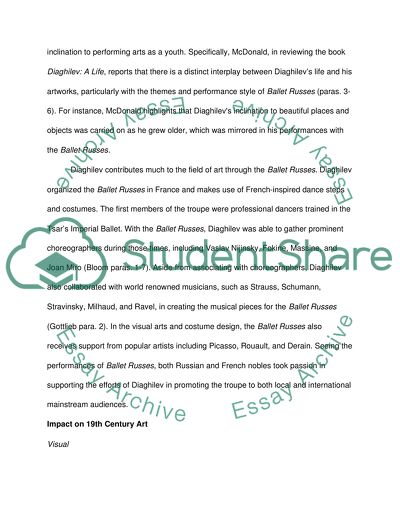Cite this document
(“Sergei Diaghilev, Ballet Russes and 19th Century Art Essay”, n.d.)
Retrieved from https://studentshare.org/english/1462336-19th-century-art
Retrieved from https://studentshare.org/english/1462336-19th-century-art
(Sergei Diaghilev, Ballet Russes and 19th Century Art Essay)
https://studentshare.org/english/1462336-19th-century-art.
https://studentshare.org/english/1462336-19th-century-art.
“Sergei Diaghilev, Ballet Russes and 19th Century Art Essay”, n.d. https://studentshare.org/english/1462336-19th-century-art.


